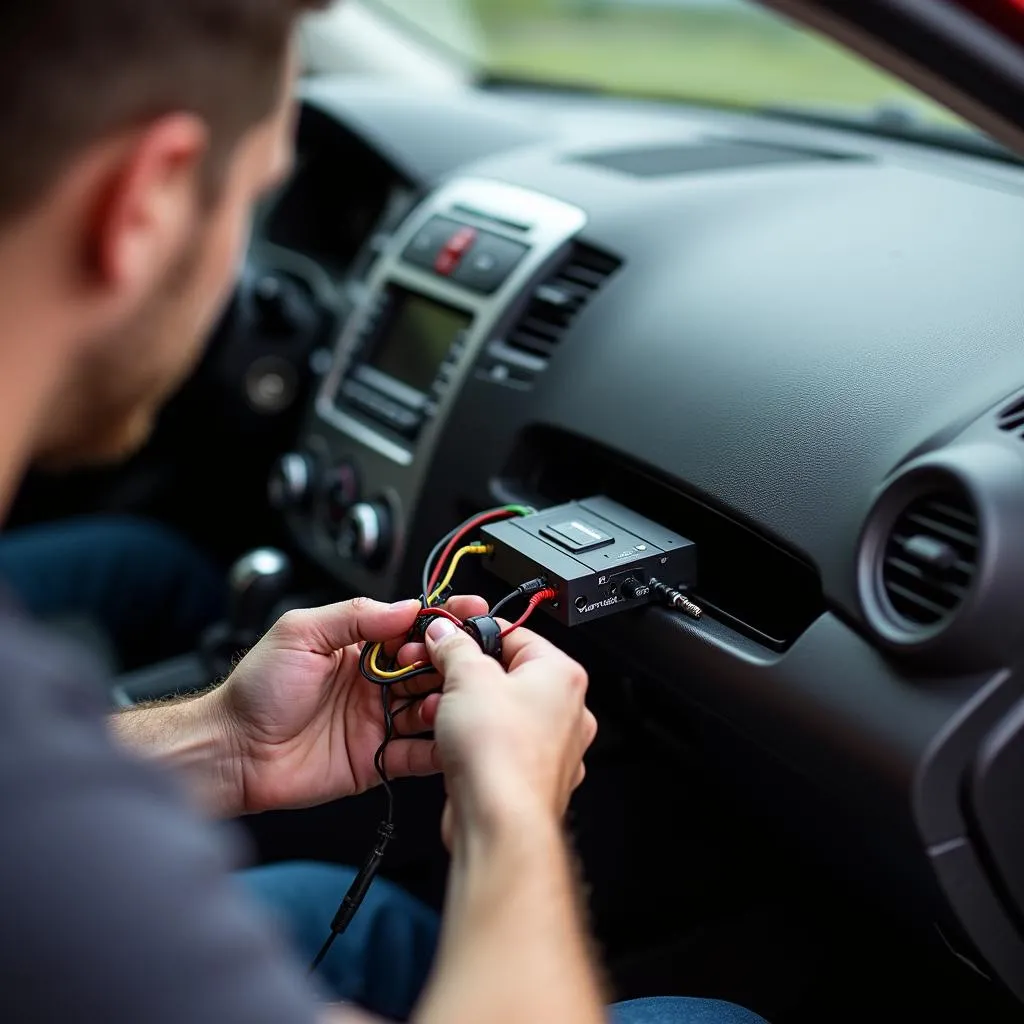The 2002 Chevy Express Van 3500 brake pressure warning switch is a critical component of your braking system. A malfunctioning switch can lead to a variety of issues, from a constantly illuminated brake light to a complete loss of braking power. This article will guide you through diagnosing and potentially fixing problems related to your 2002 Chevy Express 3500 brake pressure warning switch, offering remote diagnostic and programming solutions.
Understanding the Brake Pressure Warning Switch
The brake pressure warning switch, also known as the brake light switch, is a small but vital part located on the master cylinder. Its primary function is to detect when the brake pedal is depressed and activate the brake lights. It also plays a role in the ABS system and can trigger the warning light on your dashboard if there’s a pressure differential in the brake lines, indicating a potential leak or other serious issue. A faulty switch can cause your brake lights to stay on constantly, fail to illuminate, or activate intermittently. It can also trigger the ABS light and potentially affect the performance of your anti-lock braking system.
Diagnosing a Faulty Brake Pressure Warning Switch
Before you start replacing parts, it’s crucial to diagnose the problem correctly. A few simple tests can help determine if the brake pressure warning switch is the culprit.
- Check the Brake Lights: Have a helper observe the brake lights while you press the pedal. If the lights don’t illuminate at all, or stay on constantly, the switch is a likely suspect.
- Inspect the Switch: Visually inspect the switch for any signs of damage, corrosion, or loose connections. A damaged or corroded switch may need to be replaced.
- Test the Switch with a Multimeter: Using a multimeter, you can test the switch for continuity. This will tell you if the switch is opening and closing correctly when the brake pedal is pressed and released.
- Check for Diagnostic Trouble Codes (DTCs): Using an OBD-II scanner, you can check for any stored DTCs related to the brake system. Specific codes can pinpoint the issue to the brake pressure warning switch.
Replacing the Brake Pressure Warning Switch
Replacing the brake pressure warning switch is a relatively straightforward process that most DIYers can handle. Here are the general steps:
- Disconnect the Battery: Always disconnect the negative battery terminal before working on any electrical components.
- Locate the Switch: The switch is usually located on the master cylinder, near the brake pedal.
- Disconnect the Electrical Connector: Carefully disconnect the electrical connector from the switch.
- Remove the Switch: Unscrew the switch from the master cylinder.
- Install the New Switch: Screw the new switch into the master cylinder and tighten it to the correct torque specification.
- Reconnect the Electrical Connector: Reconnect the electrical connector to the new switch.
- Reconnect the Battery: Reconnect the negative battery terminal.
- Test the Brake Lights: Test the brake lights to ensure they are functioning correctly.
Remote Diagnostics and Programming
In some cases, remote diagnostics and programming can be used to troubleshoot and resolve issues related to the brake pressure warning switch. This involves connecting your vehicle to a diagnostic tool that communicates with a remote technician who can analyze data, identify problems, and even reprogram certain modules. This can be especially helpful if you suspect a software or communication issue related to the brake system.
“Remote diagnostics saved me a trip to the mechanic,” says John Davis, a certified automotive technician. “It quickly identified a software glitch affecting my brake pressure warning switch that I wouldn’t have been able to diagnose myself.”
Conclusion
A properly functioning 2002 Chevy Express Van 3500 brake pressure warning switch is essential for safe and reliable braking. By understanding how the switch works, how to diagnose problems, and how to replace it, you can ensure your brake system is in optimal condition. If you’re uncomfortable working on your brakes yourself, or if you suspect a more complex issue, it’s always best to consult a qualified mechanic. Don’t hesitate to explore remote diagnostic and programming options as they can offer convenient and efficient solutions for certain brake-related issues, especially those involving software or module communication problems within your 2002 Chevy Express 3500.


